|
Score: 96/100 (9.6 out of 10)
This book is absolutely, positively INCREDIBLE! Don't let the clickbait title fool you, this isn't some hate-filled, biased, bloated article comparing two sports that has just been padded to fill some pages. This is 1000+ pages of sports, sports, and more sports written by two authors who absolutely love sports! This could have easily been called THE Encyclopedia of Sports: History, Rules, and Ethics! Almost every major sport and even some pseudo-sports like pro wrestling, bodybuilding, poker, chess, and even video games are represented in this one book. Each gets given the time and attention they deserve (and sometimes even more attention than they deserve). It's unabridged and exhaustive but far from exhausting to read. There's so much information on each sport, but it's rarely ever dull. In fact, it's almost always interesting, fun, and exciting! Heck, the authors managed to make things like luge and even curling—perhaps the most mocked sport in all of the Olympics—somewhat fascinating. There was even a section about powerlifting, the main sport that our editor competes in. He said it was pretty well researched and put together but with the expected bias toward the IPF (International Powerlifting Federation) and its rules. There is a mention of nine spotters always being present, but this is not the case for the deadlift contest in almost all federations. There are probably little nitpicks that can be made by practitioners of the sport, especially the golfers who get absolutely shafted in the title and in later parts of this book. Indeed, we can imagine there will be quite a few athletes and sports enthusiasts who take umbrage with some of the statements made in the text. After all, if your favorite sport is essentially being called “not a real sport,” then you're naturally going to be pretty upset. There are a few other controversial statements made like it being unfair to consider a biological advantage (like substantially elevated testosterone levels) an unfair advantage, but then following that up with numerous examples of how the use of steroids/PEDs is unfair and how it'd be unfair for a male athlete to fight or lift against a female athlete. We know what the authors were trying to say, how if you NATURALLY (biologically) have an advantage that can't be changed (like your height), it shouldn't stop you from competing in a sport. But don't be naïve. Let's be real. Exponentially higher levels of testosterone (200-500% above the normal range) looks pretty dang questionable and unfair. The keyword there is EXPONENTIALLY. You don't need a science or ethics degree to see how that can be problematic. Imagine the devastating consequences that could result from this in a combat sport. It'd be deadly! There's a reason why males normally don't fight females and that weight-classes exist, and it's not for the dismissive reasons the authors give (like that weight-classes are pretty much arbitrary). It's because men and bigger people objectively tend to be stronger than women and little people. Force equals MASS times acceleration after all. What's strange is that the authors outright state that it's unethical to promote competitions that physically pit men against women and that they are saying that knowing that they may be accused of being chauvinistic (page 159). So which is it? Is it only fair to women with normal testosterone levels as long as it's not a combat sport because at least no one gets hurt? On the flip side of the testosterone debate, the “testers” (like WADA) sound intrusive and annoying as all heck. Could you imagine working hard your whole life and making millions of dollars but not even having the privacy to, well... have a semblance of privacy?! They seriously need to know where you are at all times so that they can test you without notice? 24/7. 365?! That's insane! There are also some parts of this book that seem like they're seeking to rationally diminish the legitimacy of certain sports and athletes, such as when Michael Phelp's many Olympic gold medals are questioned with some whataboutisms. The authors argue that he wouldn't have had so many gold medals if he'd played soccer instead, a sport with only one gold medal. You're not wrong, but that's also a pretty jerkish way to look at things. However, if you look past these thing and not take them so personally, there's a lot to learn from this book. If anything, this book leaves room for a lot of valuable debate and discussion. But what really makes this an A+ book are the stories. The authors have a story or two (at least) to tell about the athletes in just about every sport. We LOVED hearing about our favorite athletes, some of whom we hadn't heard about in a long time! And can we just say how thankful we are that the authors acknowledged the hashtag and movement we helped start in 2015 (#GiveDivasAChance, which started the women's wrestling revolution) and even acknowledged Emma (Tenille Dashwood) as one of the four female wrestlers who started it that fateful day? There are lots of moments like that in this text, but that one really stood out to us as special. This book truly leaves no stone unturned! It is a marvel of a sports book!
0 Comments
Score: 95/100 (9.5 out of 10)
This is simply one of the best autobiographical books we've encountered in a long time! It is more action-packed and engaging than most fiction novels! Now, just to get this out of the way because it's one of the few negatives: this book has one of the most cringe worthy titles imaginable. It's the kind of title you think up when you're trying to finish an essay at 3 AM, you're just a works-cited page away from finishing it, and it happens to be titled “Essay That's Due Monday: Finish It.” The title, along with a few other things (like the fact that it appeared to be written in chronological order and that we expected it to be another of those self-centered, look-how-great-I-am books), lowered our expectations of the book. But these expectations were swiftly and thoroughly shattered by what we ended up reading. Author Mark Allen may have suffered a traumatic brain injury and forgets what room he's in or where he left the keys, but he is BRILLIANT! As an autobiography, this book is almost perfect from cover to cover. It's exciting, it's engaging, it's action-packed, it's insightful, and it's inspiring. It's just the right length and does just the right things. Why can't more books be like the first half of this book? Whatever happened to an ambitious hero bravely facing new circumstances and getting into an epic brawl or two? Why is it so hard for writers to just understand there's magic when you take a protagonist we like and an antagonist and just let them fight. Just let them fight doggonit! How often do you read a sci-fi or fantasy novel with all this build toward how powerful or intimidating the bad guy is only to have him get killed off screen or by some Sarlacc-Pit shenanigans? Whatever happened to good ole' fashioned one-versus-one, man-to-man score-settling? We know this is a true story based on true people and true events, but that just goes to demonstrate: often real-life is stranger (and better) than fiction! Indeed, this book features the best and most detailed fights we've come across so far this contest cycle, and every single one of these fights is interesting and engaging. Every single one of these fights gets us to care, partly because they're described so well and partly because there are actual stakes—Allen's first boxing match, his first MMA fight, the fight that made him hear bells, the fight or sparring match that may or may not have caused his traumatic brain injury (TBI). Every single one of these fights has stakes and intrigue. What's more? We care and are concerned about the protagonist/author in every single one of them. Why is that so hard for other writers to pull this off? How hard is it to flesh out a protagonist and get us to care about their well-being? Instead, we usually get Mary Sues and Gary Stus who shrug off damage and always find their way out of sticky situations, often in the most fortuitous and unbelievable of ways. Again, we know Mark Allen is a real guy and a real fighter/coach, but again: real-life proves stranger (and better) than fiction! What an incredible and inspiring life this man lived! It's a story about trying new things, overcoming obstacles, meeting new people, and discovering yourself. But it's also a tragic story about deep internal and external struggles including substance abuse and self-harm/suicide. It's a tragic story about loss—loss of control, loss of function, loss of self. It's a tragedy, and like King Lear, it's a tragedy we feel in our soul because we don't want harm to come to the protagonist regardless of whether or not they were a jerk earlier in the story. We're still on their side through and through, even as they begin to act out irrationally toward others. Rather than being angry or frustrated at Allen, we feel for him and relate to him. It's heartbreaking to see him lose coordination and the ability to drive. It hits hard and it hits home. This is also a very relevant and timely book because of all the concerns about repeat concussions and traumatic brain injuries. Think about the current concerns influencing the NFL, WWE, boxing, and MMA. Targeting (deliberate helmet-to-helmet contact which was common when our editor played) is now punishable by ejection from the game in the NFL. Chair-shots to the head in the WWE (which used to happen almost every episode) are no longer allowed in the wake of Chris Benoit. It also seems like referee stoppages and TKOs are the norm now in boxing and MMA. Great work, Mark Allen! One of the best autobiographical books we've read in a long while! Check out “A True (Traumatic) Brain History: A Short Memoir” by Mark Allen! Score: 93/100 (9.3 out of 10)
“I Saw What I Saw” by Tony Garritano is “The Hate U Give” meets Scooby Doo! We're not kidding. You read that right. This book subverts expectations, but in a much more satisfying way than Rian Johnson would. We have to admit, our initial reaction to this book was borderline cringe as it takes very timely, relevant, and serious issues like police brutality and racial discrimination (not joking matters at all) and mends it with the murder-mystery genre. However, we were relieved when this story picks up and is presented with great tact, presenting the various sides of these issues in very nuanced ways. This isn't a one-sided hit piece, which was a huge relief. This isn't a story about police in shining armor hunting a murderous person of color. Meanwhile, this isn't a story about the evil, bloodthirsty, racist killer cops preying on minorities. This is a complex story about a potential murder-for-hire conspiracy that unravels before our eyes in fantastical fashion. Is it too soon to present stories like this in a lighthearted way? It really depends on how you personally choose to look at it. For one, things aren't exactly what they seem, and the racially-charged angle does not loom as heavy on this story as it could've. It's not completely forgotten or ignored either, even prompting the best quote in the book made by the Black neighbor, Reggie: “It shouldn’t be a choice of do we want law and order or do we want social justice... Why can’t we want both? Why can’t we get both? Don’t we deserve both? We should empower good police officers and expect that they will protect us. But at the same time, we should recognize the systemic racism that still exists in our country and fight to end it.” The main character, Sheila, is a journalist who has turned to independent investigative journalism. In other words, she is a piece of the same independent journalism that revealed some of the recent racially-charged crimes to the public. She is part of the growing movement of private, online journalism that has dared to look deeper and further than the mainstream media, with its thinly-veiled agendas on both sides of the socio-political spectrum. It can be argued that the mainstream media has lost its objectivity and will choose to air one side of the story and ignore others. Independent journalists like the protagonist of this novel—armed only with their smartphones, laptops, and intuitions—provide us with opportunities for a different perspective. Sheila begins the story having an almost naive, childlike perspective on things despite apparently having been a somewhat accomplished journalist. She identifies herself as mature, independent, and capable despite being a mamma's girl, being heavily reliant on her best friend for affirmation, and clearly not having everything together, very often making bone-headed mistakes like running into her neighbor's car. She suffers from an inherent clumsiness that her neighbor-turned-love-interest, Reggie, finds cute. We can almost imagine her being played by Melissa McCarthy or Rebel Wilson because that's the kind of vibes she gives off. Her role as a journalist makes her the perfect witness to a crime apparently involving two police officers who murder a Black man named Arthur in a way eerily similar to Derek Chauvin and George Floyd. The murder is almost identical, however this time there may be more to it than meets the eye. Over time, Sheila must wrestle with the possibility that what she saw was not all that was. The police officers who committed the crime end up being unidentifiable, it is wrongfully determined that Arthur was the victim of a simple “mugging,” and wrinkles such as the reactions of the victim's mother, business partner, and wife to his death make Sheila and her associates question what is true. What's amazing is just how funny and comedic this book is. Most of this book consists of shenanigans—bordering on Tom & Jerry/Wile E. Cayote/Bugs Bunny/Three Stooges slapstick shenanigans. Sheila (the protagonist), Tania (her spiritual sister/BFF), Reggie (her hot Black neighbor), and other characters get wound up in a bunch of humorous situations including going undercover as prostitutes (“The Hearts”) and arguing about such things as who the best superhero is. Like the crew of Scooby Doo, the characters are all distinct and play off of one another, making this a surprisingly diverse cast of characters even compared to the fantasy novels we've read. Reggie, a former theater actor and love-interest of Sheila, turns out to be one of the most interesting characters we've read about in a while. The mystery, intrigue, and slapstick humor in this book really carries it. We couldn't wait to solve this mystery! Check out “I Saw What I Saw” on Amazon! Score: 87/100 (8.7 out of 10)
This book is imaginative and disturbing. Gryscaen Dark (stylized without capitalization) can best be described as a dystopian thriller that follows top-tier hackers living in an irradiated world that has lost almost all sense of morality and possibly all hope. In this world, clean air and water are luxuries, pedophilia and human trafficking seem normalized, pornography is everywhere and seemingly on everyone's mind, and yet loving, physical human contact presents a risk of irradiation and thus death. Even the animals show signs of being irradiated, covered in blisters and tumors. This world is so miserable that characters often comment on the radiation level instead of the weather. It's not a pleasant world in any sense of the word, and that's the point. It is sobering to think that this is what humanity could become like someday. This book seems very inspired. We caught hints of Cowboy Bebop, Akira, Blade Runner, Tron, and other works. You feel like you're in a dystopian, futuristic society that is at the breaking point, although it never captures that serious, oppressive feel of a Hunger Games or a 1984. The world-building is top-notch, comparable to the “Gilraen and the Prophecy” series by Dr. Joanne Reid. However, like “Dagger and Scythe” by Emilie Knight, we're not sure if we're really supposed to be cheering for these main characters or are just being pulled along for the ride, saddled with characters we can't really get behind. We've just gotta be honest about things like that, it's not meant to be hurtful or rude. Similar to how we felt about “Dagger and Scythe,” there really wasn't a time when we felt particularly good about being part of this story and following its characters. This book and its characters can simply be unpleasant much of the time, and as you've seen in our previous reviews, we don't blow smoke regarding how we feel about a book. That's not to say that the characters aren't completely without redeemable aspects. For example, Jester and Rom are brilliant people. Jester stands out as an insane genius and Rom as a prodigy. As top-level hackers, they are adept problem solvers similar to Grissom from CSI, Walter White from Breaking Bad, or Michael Schofield from Prison Break, however without nearly the depth or charisma. The cybercrime that is committed in deliberately crashing the economy and intentionally starting riots can come across as malicious to some readers. Consider the number of suicides and homicides they indirectly cause this way. And we're left wondering if the Emperor is really that evil by comparison when we have heroes who do such things and citizens who act despicably. The writing and art leave something to be desired. They don't seem as refined as they could be. This may be a case where hiring out an editor or an artist may have been warranted, although we know how expensive that can be. As an example, let's just go over the cover really quick. It is clearly stated in the novel that the breathing masks go over the mouth and nose. This is done to avoid the civilians from inhaling irradiated air particles in areas of high concentration. However, the cover clearly shows the character wearing a mask only over their mouth, and the breathing mask appears only large enough to cover their mouth. The author as a writer shows a lot of room for improvement. And their art may also improve with practice over time. To the author's credit, this world is very complex and intricate. The world-building is very strong and the characters can be interesting from time to time. Check out “Grydscaen Dark” on Amazon! Score: 92/100 (9.2 out of 10)
“...if you received everything [you wanted] in one day, what are you going to dream about for the rest of your life?” This absolutely beautiful quote—one of the best quotes in any book we've seen this cycle—single-handedly elevated this book from an 8.8/10 (B) to a 9.2/10 (A). This quote encapsulates so much into one little line of dialogue. Furthermore, it encapsulates the positive, uplifting, didactic spirit of the novel. Children can and will learn from this novel. Even adults can get a reminder here and there from this novel about things such as integrity and honesty. “Bunky and the Walms: The Christmas Story” is creative, imaginative, and beautiful in the way that it encourages people to strive to become better people. With that said, in evaluating this novel we confronted several problematic elements that made grading it contentious. This book contains a lot of pet-peeves or “No No's” of writing. Firstly, the author's voice is very intrusive. Several times each page, the author will come in and address the reader directly, usually referring to them as “dear reader” while providing some sort of opinion and/or insight about the situation or character(s). Typically, you'd want the reader to come to these conclusions naturally and organically without being explicitly told. However, this is a book for kids and we may be viewing it more from an adult perspective. It may be important to note, as the author has brought up, that in 19th century literature, it was not uncommon for the narrator to directly speak to the reader. This "conscripted audience" was commonplace then with the likes of Charles Dickens, Jane Austen, and the Brontes. Charlotte Bronte who would very often reach out to the reader as "dear reader" or "gentle reader." Her sister, Emily, also used this convention. It made their works like Jane Eyre and Wuthering Heights more personal or even conversational. In saying this, Tryniecka--having a great love for the authors of this time period--carries forward that conversational spirit, bringing it to Bunky and the Walms. As for chraracters, we are very often told about their nature before being shown it—whether they are kind, compassionate, honest, curious, graceful, etc. This is more typical of fairy tales or morality stories, which fits this book. However, as a novel, it could be considered problematic as you typically want to allow the reader to evaluate the situation/character and make up their mind about whether a character is kind, compassionate, honest, graceful, etc. Outright telling a reader that a character is honest, then showing them how honest they are can become redundant. However, we get why it's done. It's done to highlight the good values, virtues, and attributes of each character. Speaking of values, virtues, and attributes, this book can become very didactic—teachy or preachy. We get whole review sections at the end of chapters that tell us what happened in less words and what the reader can or should learn from it. This can be a very good opportunity for parents or teachers to go over these things with their children/students. However, they can be cloying for the average experienced reader who probably noticed that such-and-such character did a good thing and received a positive outcome because of it. There are some moments when this didactic aspect pops up mid-story, seemingly out of the blue. For example, when one character is handling a Christmas light, the author tells the reader to be careful with handling hot lights (and by extension to be careful with electricity). As another example, when one character encounters Rudolph the Red-Nosed Reindeer (who is kind, welcoming, and inviting), the author tells the reader to be careful with strangers and those who they don't know who seem overly nice. It is implied that there may be unscrupulous people out there (i.e. kidnappers, predators) who use these things to disarm victims. These little asides/tangents, while a little out-of-the-blue, do serve a purpose and are very good lessons for kids to learn. There are also some absolute statements that pop up out of the blue that border on “men are just that way” and “like a good wife/husband should.” Aleksandra Tryniecka is an educator, an assistant professor at the Maria Curie-Sklodowska University, and it shows. Her love for teaching is very evident throughout the book. So here's the thing with evaluating this book: is it a perfect work of literary brilliance like the works of Tolstoy? Maybe not. However, does it provide VALUE to the reader and the world? Absolutely. Does it make the reader happier and give them a more positive outlook on life? Absolutely. There is SO MUCH GOOD in this novel that it's hard to dock it for not following every single literary convention. Ultimately, what kind of world do you want to live in? Do you want to live in a world filled with selfish, greedy, self-centered people who stir up drama and conflict, or would you rather live in a compassionate, safe, and loving world like the one Bunky imagines? We should seek to follow the example of characters like Bunky Hippo and his cousin, Rodney, who always strive to do the right thing no matter what, even if it means not getting what they want. They not only teach kids things like honesty and integrity (as mentioned before) but also personal responsibility, not being greedy or selfish, having faith (whether in God or in a positive outcome that may not be visible yet), being compassionate to those in need (as Bunky is compassionate to the “Mouses” or mice in his home); being cautious with strangers, using your imagination (as Bunky is constantly writing and creating his fantasy world), having hopes and dreams (as Bunky dreams of marrying the Bunky Princess), and being a good friend or partner. There is so much value in those lessons. Check out “Bunky and the Walms: The Christmas Story” We think it is perfect to read to children 8-12! You can read a chapter per day to your children every morning or night! Score: 94/100 (9.4 out of 10)
What a phenomenal book that gives life to a phenomenal concept! Anything that brings education and a love of the performing arts and physical fitness to children is a plus in our book. The thought and effort that went into creating this must've been off the charts! We were supremely impressed! This isn't simply an instructional book about dancing, it's an interactive story that can make the experience more fun and exciting for the children. It is important to note that while this is a children's book, it really seems best in the hands that are already quite mature, capable, and competent. We feel you'll really need an older brother/sister, parent, or teacher to be guiding and supervising younger readers so that they can follow these routines. Yes, the instructions are clear and easy-to-follow for adults, but they can be a bit much for young children. It is quite wordy and complex. While reading this, you're constantly referring back and forth between the story and the relevant movements. The movements are not very difficult and the pictures are just about perfect in showing how to do them. The story itself does seem a little off with a kind-hearted dancer/ballerina having to endure poor treatment from bullies like Declan while using her dance movements to perform a kind of magic. We love stories that have a clear antagonist, but something about Declan's presence and eventual comeuppance in this seems a little strange. He's a very comedic or one-dimensional villain who suffers a very straightforward outcome due to his behavior. He kinda looks and acts like Spike from Little Giants or that one kid who got his tongue stuck to the pole in Christmas Story. It is actually kinda interesting that he's even given a name at all as he could've just been called “the Bully” or the “Big Bully.” Is he a reoccurring character who undergoes an arc in some of the other books in this Once Upon a Dance series? Is he like Swiper and acts like a menace throughout the series maybe? There's no way he can be a one-and-done character with the amount of attention he gets. Andi is a great role-model for children. She is passionate, thoughtful, hard working, and knows her self-worth. She doesn't respond to negative situations with hate, jealousy, or anger, but rather with a sense of calm, reminding herself that she can be the good she wants to see in the world. She's the heroine that children should really emulate. We were simply not expecting this to involve serious human conflict with supernatural elements, but we get it. We have fantasy writers in our midst. We love seeing magic involved, especially when it seems symbolic for the kind of 'magic' you create through performance. And we also get that the author may have been trying to bring reality and some life lessons into this. There are gonna be people who are going to laugh and mock what you try to accomplish. They will try to discourage you, but you have to know that your goals are your goals and that the things you love to do are the things you should be doing. Follow your heart. Work hard. Believe in the process. Make progress. Win at life. It's quite a beautiful message! The mother-daughter team at Once Upon a Dance did a phenomenal job and we're very excited to support and share their work! Get "Andi's Valentine Tree" on Amazon! Follow on Facebook and help them get to 1,000! Follow on Instagram Visit the Website Score: 93/100 (9.3 out of 10)
This haunting, nightmarish work of acrylic art by feminist artist Kristan Ryan packs a ton of punch in just one static image! If art is evaluated solely on shear beauty, then it can be said that this painting is no Mona Lisa—but that's not the point. Art can also be evaluated by one simple but crucial question: how much can an artist say without saying anything (written or spoken)? There's not much more you can say with one image than this. Let's look at the woman in the painting first as she's the center of our focus. Take note of her wrinkles, particularly the ones on her head and cheeks. These wrinkles tell us that she is quite old or even elderly, at least past middle-age. By extension, this also tells us that she has been holding these thoughts, feelings, and frustrations in for a long time. Furthermore, look at her size. She's not a small lady, in fact she's quite overweight or even obese (perhaps over 220 pounds). We can take away from this that she has A LOT of pent up thoughts, feelings, and frustration inside of her. We may be able to take away from the fact that she still wears makeup (apparently rouge on her cheeks and possibly red lipstick) that she has been covering up her natural appearance (or feelings), concealing her symbolic wrinkles and frown. Similarly, she clearly must dye her hair at that age, further concealing herself. Like her wrinkles, her hair seems to ripple, wave, and flare out and away from the center point from which the birds (or words) are leaving her mouth—almost like shockwaves from an explosion or from a strong gust of wind. It's an incredible release of force and fury! Observe the colors. The red, orange, and simmering yellow are the colors of fire—flames burning. The flames appear hotter on her right than on her left, and she is also facing toward the right, possibly implying that her ideas are coming from a Left-leaning socio-political ideology toward those on the Right. Her hand positioning and gesture suggest she is choking or has been choking, but they also indicate where her words are coming from (her heart). Her hands may be disproportionately small. Also, her breasts seem too low on her body (almost to the mid-point). This is not a hyper-realistic painting, we understand. Her right arm is clearly smaller than her left which may play along with the idea that she is Left-leaning politically. Now to break down the birds in the painting. The bird on the right (the woman's left) appears like it's going to join the “fire” or the background. Or perhaps, more importantly, its going to tell others about the woman's ideas. The blue one and the brown one both seem happy to have escaped. The brown one seems curious about where the blue one is going or is perhaps happy for it. Are these analogous or symbolic for different groups of people or different ideologies? While initially we thought the expression of the woman to be of anger or fury, it might actually be an expression of shock and/or surprise. Perhaps it's a combination of both or many of these emotions. That's a whole range of emotions in one little picture! Check out more of artist Kristan Ryan's art at: https://www.facebook.com/Chinagirlpaints Score: 91/100 (9.1 out of 10)
“The Apapa Six” is a book with great potential that could very well be a mainstay of every anthropology class on West Africa! The book gives the record of a group of western travelers, many well-educated and pursuing ministry (including the author), as they undergo an exciting journey through the countries of West Africa on the eponymous boat, the Apapa Six, in the 1960s. Try saying that six times fast. To our recollection, some of the countries they travel through and which are covered by the author are Ghana, Nigeria, and Senegal. The book discusses other West African nations, but Ghana stood out as a major population and education hub, and some of our readers have friends and co-workers from Nigeria and Senegal who were excited to hear their countries discussed! This book is incredibly dense and detailed, almost to a fault. It was sometimes exhausting to read. Our eyes ached at the end of this. Part of that is due to the formatting and the choice of font or font size. There are no indentations to be found anywhere. It's formatted almost like a blog. Now, that can be due to this being intended as a textbook with the text needing to wrap around blocks of text, or that could just have been a result of the author finding it easier to write that way. Speaking of blocks of text, some of these blocks (or paragraphs) are enormous. There are some paragraphs in this book that are almost two pages long! As mentioned before, there's something about the font or the font size that make it more challenging to read. It looks to be font size 10 (the default on some word processors). A good editor or a beta reader would've caught these two flaws pretty easily. But here's the thing: effort is effort, research is research, substance is substance, content is content, experience is experience. These are intangibles. Anyone can hire out an editor, not many people can say they have experienced traveling through West Africa during one of the most important times in the history of western colonialism in the region. This little book looks like it took years to think through and put together. There are pages and pages of citations due to the amount of research that was done. And there is a ton of substance and content here in this little book. This book can be very educational and eye-opening about how Africa's colonial history and western influence continues to weigh heavy on it today. Although much of it is presented in a chronological, matter-of-fact manner, it has its share of amusing parts. First of all, the pictures are amazing and very helpful in giving us a feel about what the author is talking about. Second of all, there are little stories here and there that are clearly not intended to be didactic, which can be a breath of fresh air. For example, the author encounters a big lizard at one point that scares him. He witnesses the hysteria as workers encounter a large snake that must be removed by a maintenance man (acting as animal control). They also try to cover up the accidental death of a neighborhood pet chicken in almost Tom & Jerry fashion. Also, there are some asides about Africa's Islamic past and how the religion has changed and evolved in Africa to become quite unique to Africans. The same can be said for Christianity in Africa. There are also some great history lessons about the often-turbulent transitions of power in the region, not only from westerners to Africans but from Africans to Africans. It is stated so matter-of-factly when we learn that one West African nation is currently ruled by someone who won over control of the country in a military coupe only to be conveniently “elected” in 2018 as a formality. Overall this really is a valuable piece of historical literature. You can get this deep and insightful book on Barnes & Noble! Score: 92/100 (9.2 out of 10)
“The Covenant Names of God” is a truly great book on the nature and character of God and his relationship with humanity. Pastor Richard Sones is an excellent teacher and communicator who has clearly done his research. Admittedly, out editor really, really, really digs this stuff—call it “esoteric” or just biblical. In prayer, he'll often evoke the name of God as he views God as a very unique and personal being rather than a being-up-there-somewhere. Not to be blinded by personal bias, this book is interesting, well-researched, and well-written. The formatting is solid except for some inconsistent spacing here and there (likely the fault of the word processing software, which is just one of those things that happens). This book is a deep-dive into the various instances when God interacted with people in the Bible including Noah, Moses, Abraham, Gideon, and more. If you thought you were familiar with these stories and had them all figured out, you might have to think again! Did you know that many characters in the Bible refer to God by variations or derivatives of YHWH—often translated as Yahweh or Jehovah? Did you know that all of these variations and derivatives have their own unique and special meaning that's often applicable to the situation or are prophetic in some way? For example, Abraham named the mountain on which he was asked to sacrifice Isaac “Jehovah-Jireh” meaning “the Lord will provide” as God provided a ram stuck in a thorn bush for sacrifice. This is also symbolic and prophetic because in over 1,000 years time, God would provide the ultimate sacrifice in the form of his son, Jesus, whose head would likewise be caught in a crown of thorns. That example may be familiar to people, but did you know that God is also called “Jehovah Ropheka” (practically “Doctor Jehovah”) as in the one who is able to help and heal? He's also called “Jehovah Nissi” (“Jehovah is my banner”) and “Jehovah Shalom” (“The Lord is peace”) among many other names. The latter title is actually given to God by a judge named Gideon, a character who doesn't get much attention, likely overshadowed by Samson. What's interesting is that the judges of Israel were not usually peaceful people who lived in peaceful circumstances, they were militant and often violent. For one of them to evoke the name of God as their “peace” is very poetic. There are little bits and pieces of this book that are just so enjoyable to read. One of the most touching parts that we can remember is when Sones discusses a miracle he witnessed as a chaplain in the military: a woman who was essentially a vegetable or “brain dead” yet who regained her function and life against all odds. Sones says that God is capable of doing all things and does things for a reason. We highly recommend “The Covenant Names of God” for those following or are interested in studying an Abrahamic faith. It is a great book about the Bible that looks at some of these stories under a microscope. You can get it on Amazon! Score: 94/100 (9.4 out of 10)- Children's Illustrated Books
When it comes to finding a cute, simple, rereadable book for young children, it doesn't get much better than “The Adventures of Kodie and Bella” by Sylvie Bordzuk! It's borderline perfect in those regards. Your kids will be wanting to read this with you over and over again! It is no understatement that this book and its characters are absolutely adorable! The illustrations by Alex Crump are great for the purposes of this book. The same can be said about the writing. Just flipping through the pages is enough to put smiles on faces. It makes your heart laugh and sing to see the happy, smiling faces of the anthropomorphic animal characters. We're happy when they're happy, sad when they're sad, and curious when they're curious. We're emotionally invested in them the same way we'd be emotionally invested in our own pets. Kodie and Bella have tremendous chemistry. In the parts that the characters are not together, we're just on our feet cheering for them to reunite, and we're sure kids will be too! There are also no shortage of great characters and moments when parents and teachers will be able to prompt questions like “What kinda animal is this?” or “What is he thinking about?” or “What did they find?” The author must really understand children and children's books. One of our judges has taught for 14 years including seven years as a preschool teacher. He says that the way that the sentences are structured and how simple the rhyme schemes are make for ideal reading for ages 2-7. Children don't want to be hit with a huge block of text. They want to see the beautiful pictures and pick up on the patterns in the language. That's why songs and nursery rhymes work so great with that age. Apparently, Kodie and Bella are based on the author's own cat and a squirrel in the neighborhood. You know what they say: the best things are based on reality. This definitely comes across as inspired. This book is fun, imaginative, and utterly adorable! We highly recommend it for parents and teachers of children ages 2-7! We just can't wait to hear more about the continued adventures of these two cute characters! You can get it on Amazon today for less than $13! |
Archives
July 2024
Categories |
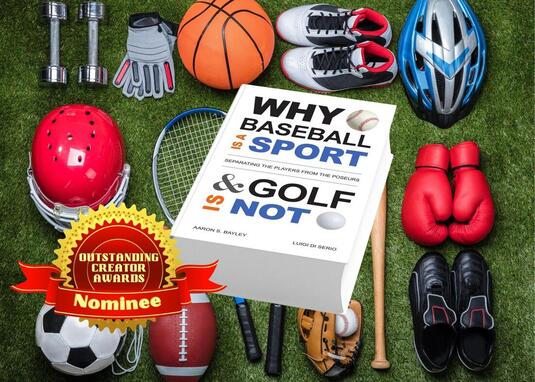
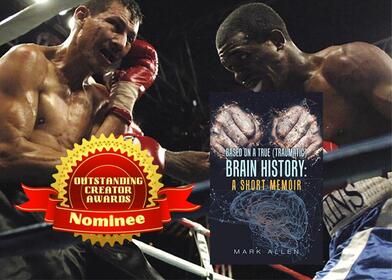
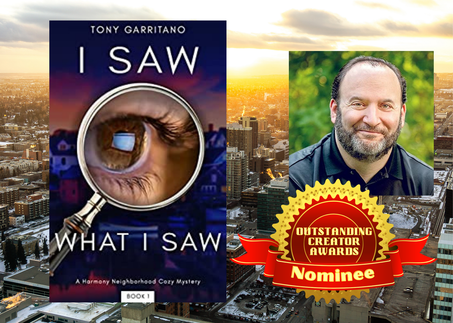
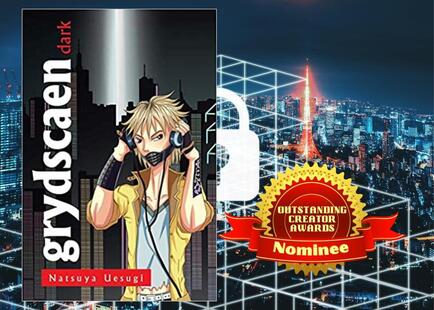
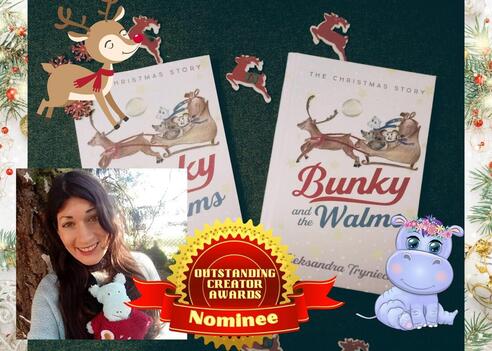
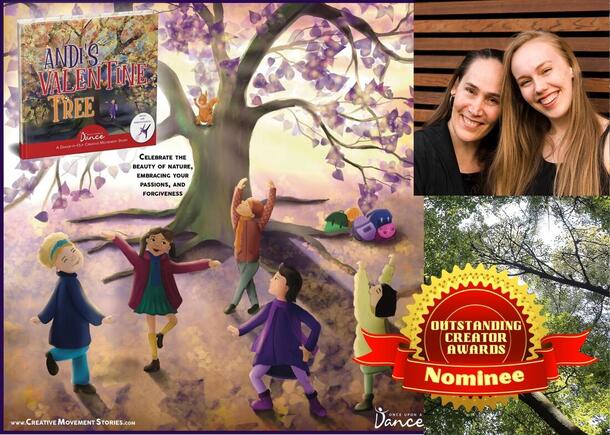
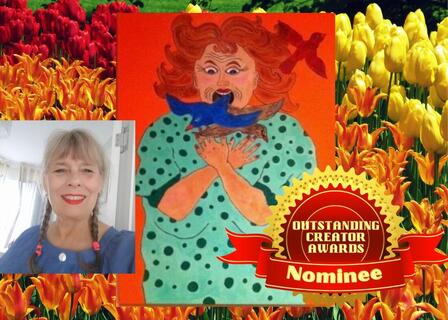
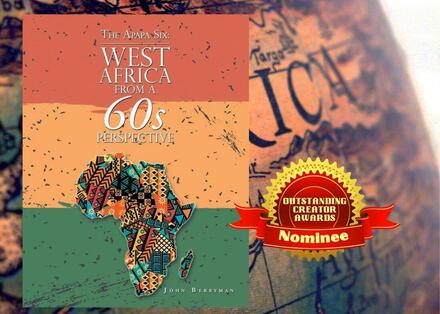
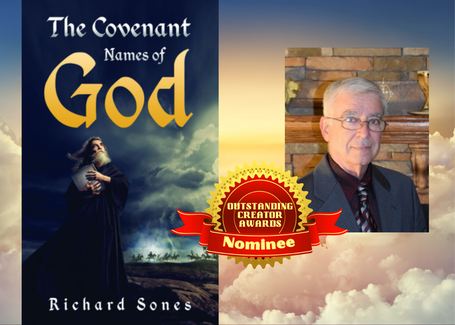
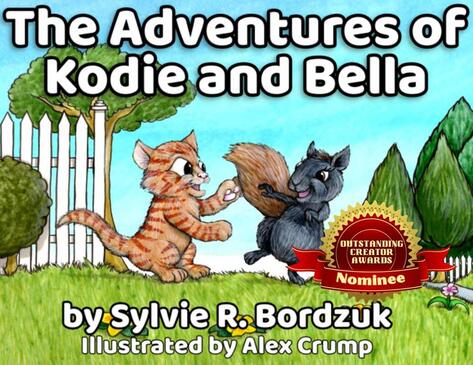
 RSS Feed
RSS Feed